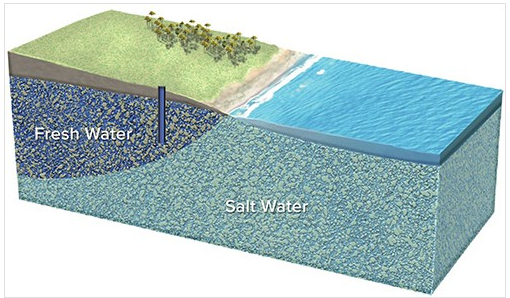Without human intervention to save a species from extinction, which one of the following organisms would be most likely to survive threats to its extinction?
A) A flower species that produces three seeds a year and lives for up to 4 years
B) A mushroom species that releases millions of airborne spores and dies
C) An elephant species that provides parental care for 1 or 2 offspring for more than a year
D) A frog that lays 50 to 100 eggs every year for 2 to 3 years
B
You might also like to view...
What could happen if this well is overpumped?

A) It will run out of water and become a dry well.
B) It will yield more water over time.
C) The water table will drop, causing sand to flow into the well.
D) The bottom of the lens of fresh water will rise, causing the well to draw in salt water.
The destruction of oyster larvae in Oregon aquaculture tanks was caused by
A) pathogenic bacteria. B) minute predators accidentally imported in sea water. C) temperatures too warm for larval survival. D) increase in the acidity of sea water in which the larvae were incubated.
Methods for desalinating sea water to produce fresh water include ________
A) reverse osmosis and distillation B) making sea water acid to transform salts to solids C) treating with activated charcoal and clay D) treating sea water with salt-consuming marine bacteria E) filtration and sedimentation
Why are master joints so important?
What will be an ideal response?